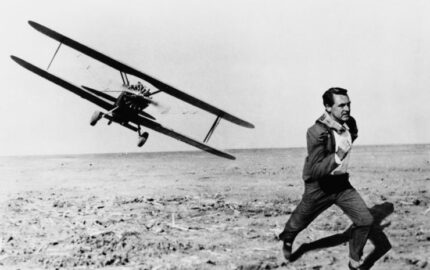One of our sister sites, Nieman Reports, has just posted its latest issue, “The Beat Goes On.” You can take a gander at the issue in its entirety, but we thought we’d include some highlights for those of you with a particular interest in narrative.
In “Modern-Day Slavery: A Necessary Beat – with Different Challenges,” E. Benjamin Skinner offers a well-written account of reporting on the sex trafficking beat, weighing storytelling with ethics, action, and the needs of his subjects. Melanie Hamman’s “Visual Stories of Human Trafficking’s Victims,” a partner piece to Skinner’s, discusses visual documentary of criminal, exploitative activity, and wounded subjects. “Merely by retelling her story,” Hamman writes, “a victim can be retraumatized, severely complicating her recovery.”
Storyboard contributor (and longtime narrative journalist) Beth Macy offers a sample of the kinds of stories she balances on the family beat at The Roanoke Times and how that beat has changed in her many years there. Looking to the future, Macy says that when it comes to stories, “If we tell them well, it won’t matter what medium we use. They can be our saving grace.”
Very different opinions emerge about new media’s effect on the sports beat, including storytelling in sports. Former Wall Street Journal tech columnist Jason Fry discusses sportswriting as a blogger and ponders what’s most important in reporting. Lindsay Jones, who covers the Broncos for The Denver Post, explains how Twitter works for her. But in excerpts from the 2010 Red Smith Lecture on Journalism at the University of Notre Dame, sportswriter Frank Deford (a senior contributing writer with Sports Illustrated and commentator for NPR) worries about what the digital revolution has done to sportswriting:
Gay Talese might well agree. In an excerpt from an October talk in Boston celebrating the release of “The Silent Season of a Hero: the Sports Writing of Gay Talese,” he answered a question from the audience by saying that reporters are behind their laptops too much. Arguing for being present with subjects and occasionally unplugging, Talese said, “Sometimes I think reporters should waste some time. Good journalism is wasting time.”
The winter issue includes many other stories, from reviews of books about the status of women journalists and the work of legendary writers to a look at whether news organizations have some obligation to tell stories whose audience size may not sustain the resources required to report them. See the full roster here.
In “Modern-Day Slavery: A Necessary Beat – with Different Challenges,” E. Benjamin Skinner offers a well-written account of reporting on the sex trafficking beat, weighing storytelling with ethics, action, and the needs of his subjects. Melanie Hamman’s “Visual Stories of Human Trafficking’s Victims,” a partner piece to Skinner’s, discusses visual documentary of criminal, exploitative activity, and wounded subjects. “Merely by retelling her story,” Hamman writes, “a victim can be retraumatized, severely complicating her recovery.”
Storyboard contributor (and longtime narrative journalist) Beth Macy offers a sample of the kinds of stories she balances on the family beat at The Roanoke Times and how that beat has changed in her many years there. Looking to the future, Macy says that when it comes to stories, “If we tell them well, it won’t matter what medium we use. They can be our saving grace.”
Very different opinions emerge about new media’s effect on the sports beat, including storytelling in sports. Former Wall Street Journal tech columnist Jason Fry discusses sportswriting as a blogger and ponders what’s most important in reporting. Lindsay Jones, who covers the Broncos for The Denver Post, explains how Twitter works for her. But in excerpts from the 2010 Red Smith Lecture on Journalism at the University of Notre Dame, sportswriter Frank Deford (a senior contributing writer with Sports Illustrated and commentator for NPR) worries about what the digital revolution has done to sportswriting:
“The Internet – or to be kind, the influence of the Internet – is reducing the amount of storytelling in sports journalism ... the story – which was always the best of sportswriting, what sports gave so sweetly to us writers – the sports story is the victim. Sportswriting remains so popular – one word. Sports stories – two words, are disappearing.”
Gay Talese might well agree. In an excerpt from an October talk in Boston celebrating the release of “The Silent Season of a Hero: the Sports Writing of Gay Talese,” he answered a question from the audience by saying that reporters are behind their laptops too much. Arguing for being present with subjects and occasionally unplugging, Talese said, “Sometimes I think reporters should waste some time. Good journalism is wasting time.”
The winter issue includes many other stories, from reviews of books about the status of women journalists and the work of legendary writers to a look at whether news organizations have some obligation to tell stories whose audience size may not sustain the resources required to report them. See the full roster here.

